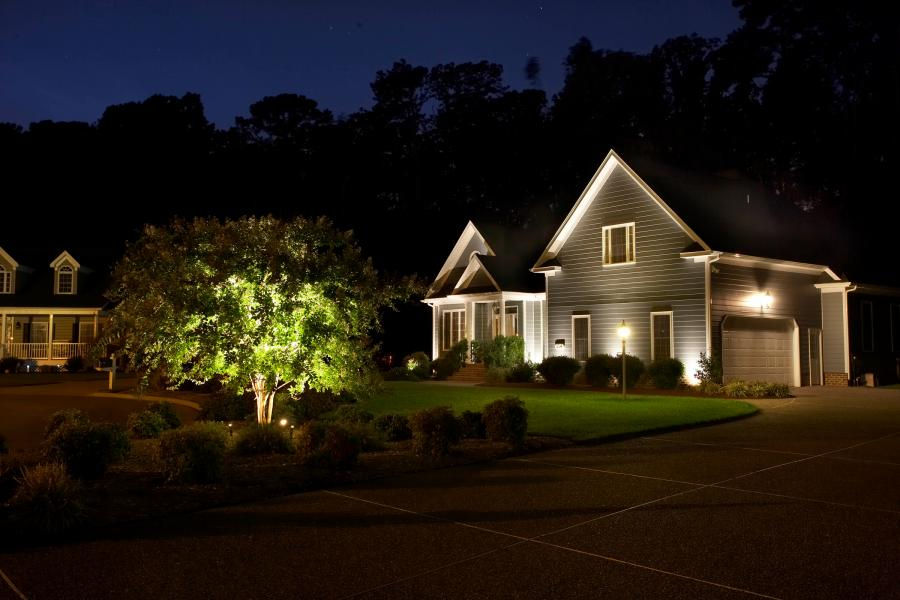Designing a Low Voltage Landscape Lighting System
- Briana Johnson
- Jun 15, 2021
- 3 min read
Updated: Mar 23, 2024
Adding low voltage landscape lighting is an effective way to enhance the aesthetic of your backyard while improving its safety and functionality. Low voltage lighting has been around for over 20 years now.
This type of lighting system adds a new dimension to the garden areas around your home and allows properties to be enjoyed after the sun goes down with little energy draw. If you have an existing lighting system, your landscape contractor can enhance or adapt it to reflect the latest trends.
These days, incandescent light bulbs are out and LED is the norm - creating many new aesthetic possibilities with dimming, colors, types of effect and a plethora of fixtures from a multitude of manufacturers. These contemporary systems can be automated, programmed, app based and offer enhanced opportunities for zoning lights, grouping lights, changing colors for special events and holidays
Experienced landscapers near you know the value of incorporating low voltage landscape lighting into the layout of your landscaping.
Getting Started
Before you start purchasing items for your project, do a walkthrough of your property to decide what areas you want to light. You may find areas that tend to be darker or more shadowy than other areas of your yard, these are great opportunities to illuminate your yard. Pay particular attention to any existing street lighting as it can have a pronounced effect on the design and quality of your system.
Choose the best lighting techniques for your backyard and the accessories that will create your desired effect. You can still choose between line voltage and low voltage, but always work with bulbs that are energy efficient.
Landscape Lighting Techniques
Grazing
In this lighting technique, lights are positioned close to an interesting surface such as a masonry wall, wood shingles, designer doors, or tree bark to highlight texture.
Silhouetting
Silhouetting involves shining a light against a wall, behind an object so that it is seen in contrast to the illuminated wall. Silhouetting should be used only when the elements are right.
Uplighting
As the name suggests, in this technique, lights are aimed upwards to create a dramatic effect. When using this technique, focus the light on the key object in your yard – typically trees or structural features.
Path and Area Lighting
Some areas to light up in your landscape include your driveway edges, front entry, steps or paths, and garage. Lighting your driveway is a great way to enhance the aesthetic appeal of your property and burglar-proof your backyard. Illuminating side and rear entries to your house will discourage burglars.
Great lighting at the front of your house will extend a warm welcome to your guests. Illuminating your steps and paths will reduce the chances of trips, slips, and falls while garage lighting will enhance home safety and security.
Choose Between Different Types of Landscape Lighting Fixtures
Different types of lighting fixtures include:
Cylinder, Box Shape, and Bullet Shape
These lighting fixtures are designed to help focus and direct the light beams. Some reduce glare and protect the lamp and socket from moisture.
Spot or Accent
These fixtures can be used for uplighting, accenting, grazing, and cross-lighting.
Bollard and Post Lights
Bollard and post lights can be used to light steps, garden walks, pool and deck areas and pathways, and create attractive light patterns for driveways.
Spread and Diffused Lights
These low-level units are used to provide illumination for perimeter plantings, steps and paths, driveways, and flower beds.
Landscape Lighting Tips
Use a timer to automatically turn lights on and off
Use a mixture of lighting techniques
Hide the lighting (fixture) source when possible
You get what you pay for – quality lighting fixtures last
Landscape lighting professionals can set up demonstrations at your property
Need help with choosing the right lighting for your landscape? Look no further than Gardenworks. Our team consists of seasoned landscape experts. We will turn your backyard into an enchanting sanctuary day and night. To make an appointment, call us at (707) 857-2050.






